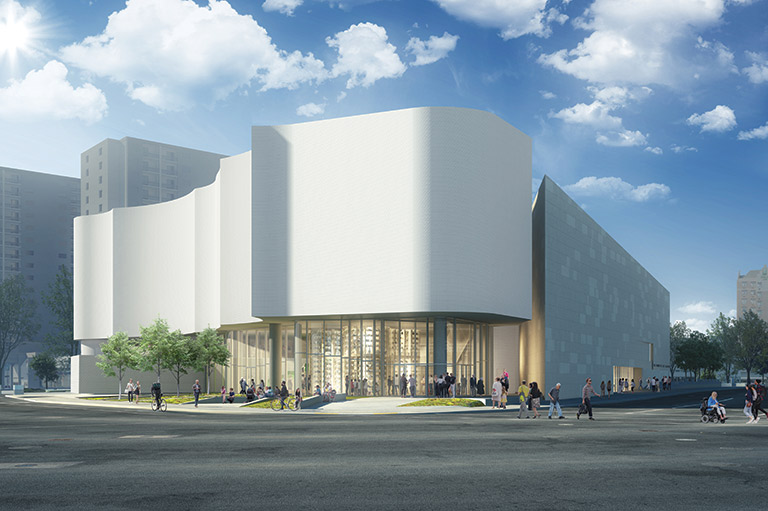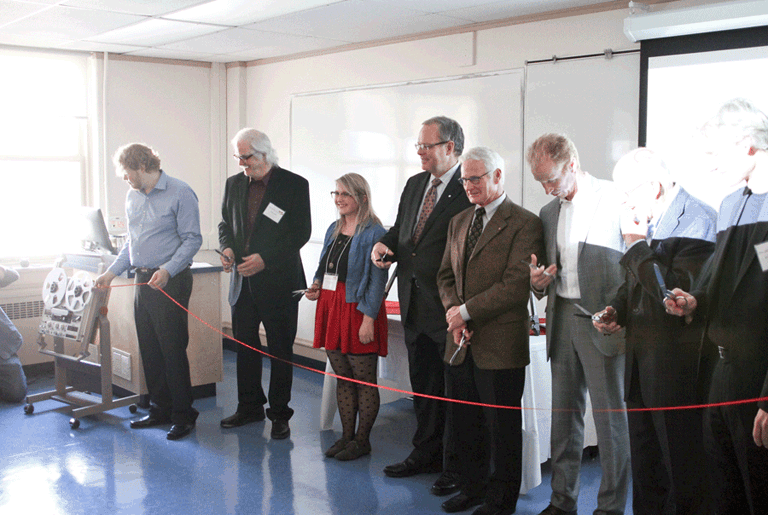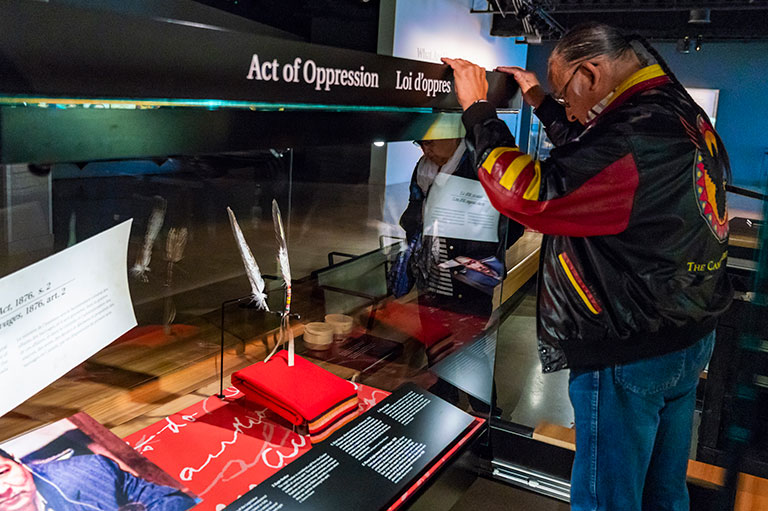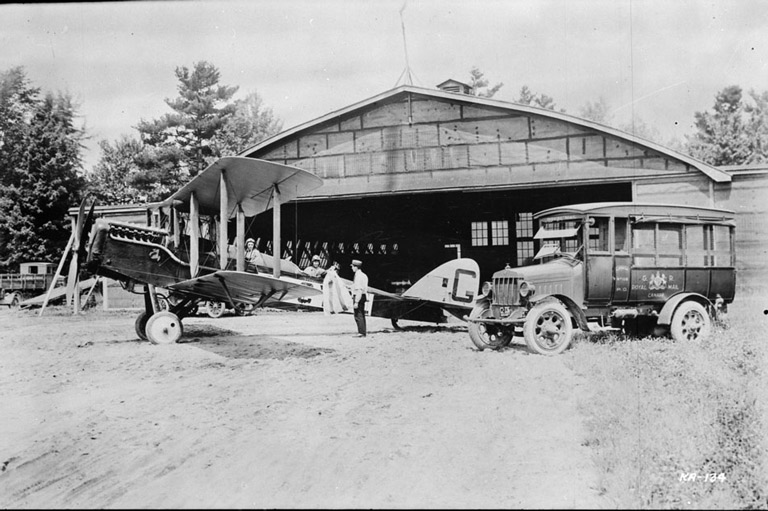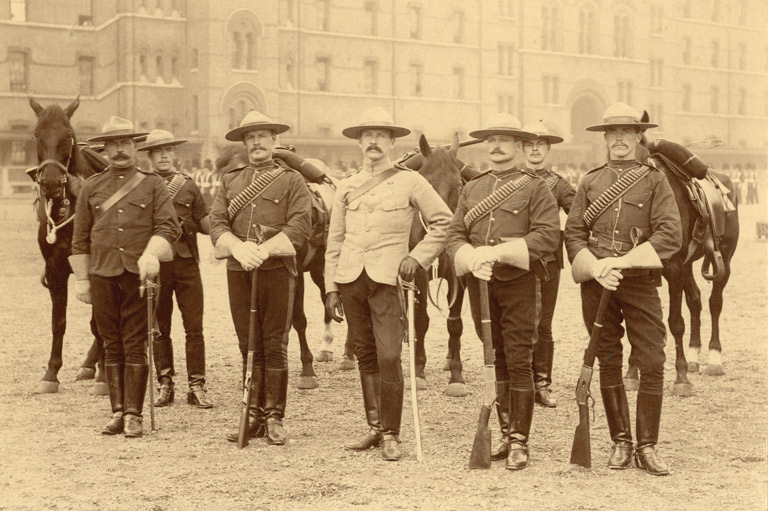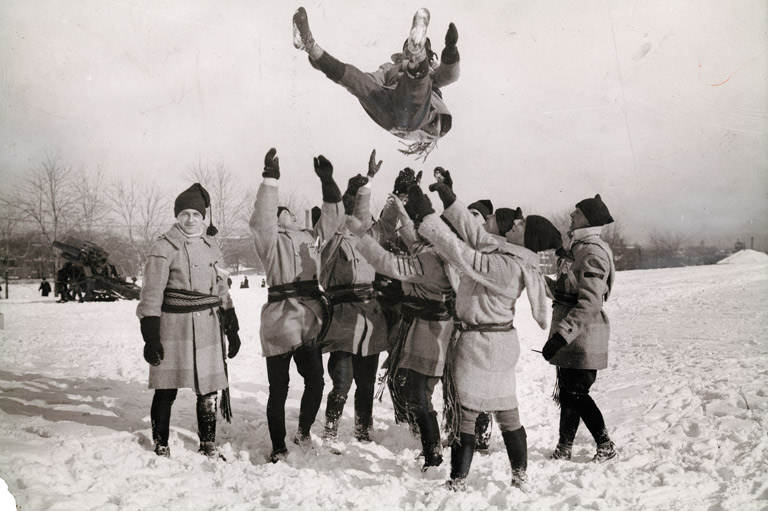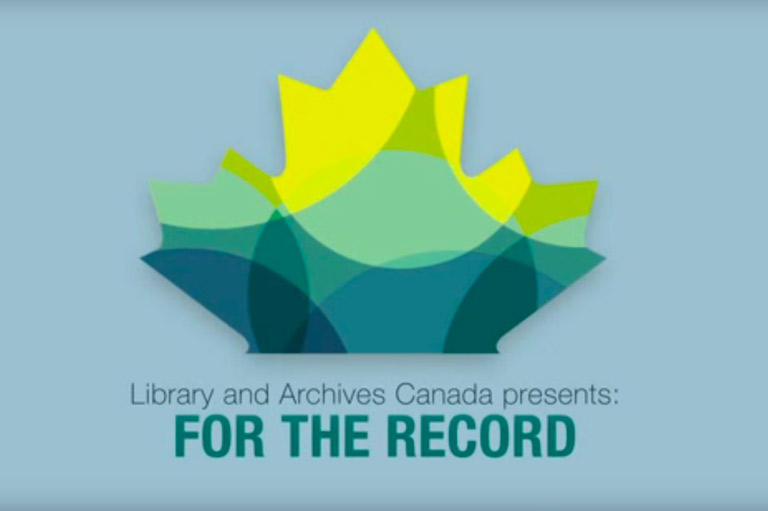Rallying Point
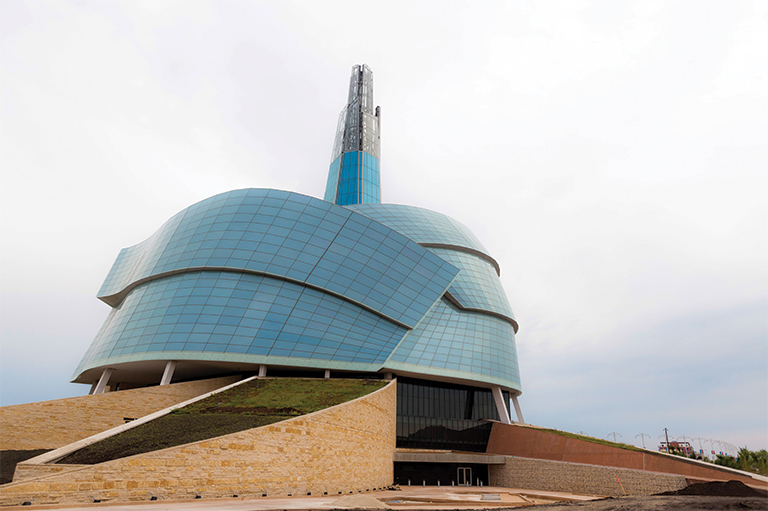
The Canadian Museum for Human Rights is a soaring and dramatic addition to Winnipeg’s skyline. In fact, its architect, Antoine Predock, says the building’s silhouette — which is unique, even in an era of numerous major buildings with curving and experimental designs — is one of his favourite things about the now-completed structure. His other favourite element is what he calls the “alabaster labyrinth,” a set of overlapping walkways covered in translucent Spanish alabaster and lit from within. These spectacular “ribbons of light” offer moments of beauty and respite as visitors move between eleven main galleries housed inside the Manitoba Tyndall stone-clad “mountain” that forms the core of the building.
Albuquerque, New Mexico-based Predock was in Winnipeg this spring to receive an honorary fellowship from the Royal Architectural Institute of Canada and to inspect his creation as it readied for opening. Occupied by administrative and curatorial staff since January, the building welcomes the public beginning September 20. Predock says he almost never enters open competitions, but the proposal for Canada’s new human rights museum was a powerful attraction. “In my dreams, through my career, I never imagined this kind of opportunity arising — to make a design response, an artistic response, to something as profound as human rights.”
The architectural committee that chose Predock’s design saw it as “an inspirational building that achieves a complexity relating to the diversity of human experience.” While its shape is certainly distinct and highly recognizable, the building’s unusual characteristics are multiplied within. Materials range from tinted concrete to hexagonal basalt columns, from 5,400 tonnes of sometimes imposing steel infrastructure to 1,669 custom glass panes on the hundred-metre-tall illuminated tower and massive curving cloud of windows. In the main public spaces, next to no walls or ceilings meet at right angles. Predock wants visitors to be affected by the experience of being inside the museum: “I hope it’s a transformational experience, not only in terms of the message that the building will deliver,” he said, “but also the sense that I’ve been in a very unusual space, and there’s something about that that has changed me, too.”
With 7 uniquely curated newsletters to choose from, we have something for everyone.
The idea of changing people’s sense of their place in the world was always central to the endeavour. The museum’s story starts with Winnipeg’s Asper family, in particular lawyer and entrepreneur Israel “Izzy” Asper (who died in 2003) and his daughter, Gail, also a lawyer but now perhaps best-known as the driving force behind the museum project and its fundraising arm, the Friends of the Canadian Museum for Human Rights. The two, along with Moe Levy, executive director of the family’s charitable Asper Foundation, kick-started a project that at first wasn’t intended to involve a new museum.
As Gail Asper explains it, she was accompanying a group of Canadian students in May 2000 on a foundation-supported trip to Washington, D.C., where they visited the U.S. Holocaust Memorial Museum and other sites, when she discovered that the students seemed to know more about American than Canadian human rights history. “They all knew the words to the [U.S.] Declaration of Independence, but they didn’t really know anything about the Charter [the Canadian Charter of Rights and Freedoms],” she said. It reminded Asper of her own experience after she moved from Manitoba to Nova Scotia at the age of twenty-four to work as a lawyer. It was only then that she learned about the eighteenth-century expulsion of the Acadians from what is now Canada’s east coast, about Black slavery in Canada, and about the Black Halifax-area community of Africville, which was demolished in the 1960s.
Asper also mentions the Persons Case, which only came to her attention in 1982, the year the Charter was passed into law. “I did not know that there was actually a court case that said women were not persons, and we had to go all the way to the Privy Council. So I was just generally quite upset that so much of these pivotal parts of Canadian history, that happened to be human rights history, but just general history, I had not learned, I did not know,” she said. “And it was very clear that most of these kids, even twenty years later, in 1999 or 2000, still didn’t know this stuff.”
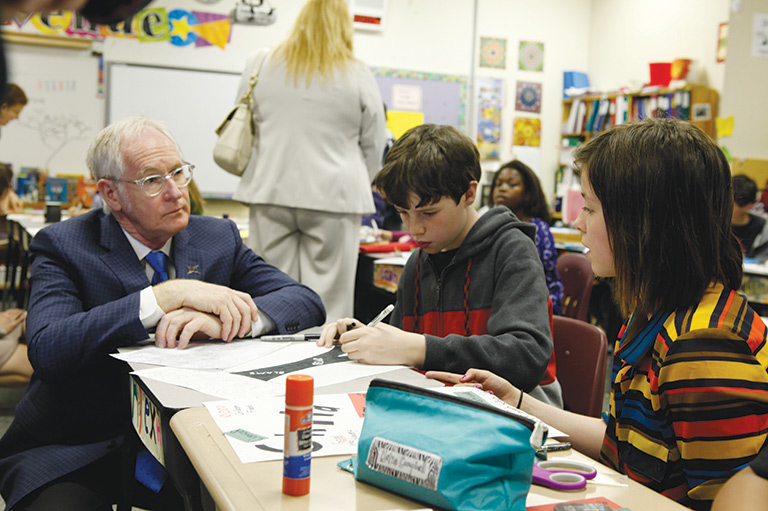
The first idea was to set up a Canadian trip to Ottawa, along the lines of the Washington trip. But she soon learned that there was no place to see and learn about the Charter — or a range of other Canadian human rights incidents and accomplishments. “The Charter is not on display anywhere; there is no institution that chronicles our democracy, how we came to be as a democracy, and what the Charter means,” Asper said. So her father, who had brought a small-town North Dakota TV station to Winnipeg and developed it into an international media conglomerate, said they needed to create a uniquely Canadian museum. “It would be the place that you would go to to learn Canada’s history of human rights — as he always said, warts and all — and understand how the freedoms that we all enjoy, these beautiful freedoms that we all enjoy, how they came to be, and how they can be lost if we are not vigilant.” And what better place than Winnipeg, a city with plenty of its own human rights history, located in the centre of the country.
The museum is situated near the forks of the Red and Assiniboine rivers, across the railway tracks from the heart of Winnipeg’s downtown. Asper calls it “a perfect setting for an experience rich in diversity,” noting that the site on Treaty One land is believed to have been a First Nations meeting place for thousands of years. It’s across the river from the French community of St. Boniface and the grave of Louis Riel, around the corner from the locations of some of the major events of the 1919 Winnipeg General Strike, and down the street from the provincial legislature where, thanks to Nellie McClung, Manitoba women became the first in Canada to gain the vote.
Because human rights are universal, there is a sense in which the museum could have been anywhere, says Asper, whose direct role with the museum is as a member of its board of directors. But she also believes Canada has its own take on human rights. “There’s a Canadian way of looking at things that has made this country a respected leader around the world, and we as Canadians need to know it and we need to be proud to tell it to others,” she said. “I think we’ve got a belief that you can be different from one another but equal to one another, and it’s okay to be different. ... We embrace difference but we demand equality and equal treatment before the law. I think that’s a uniquely Canadian way of looking at things.”
Advertisement
Asper believes Canadians need to understand their past, including the Persons Case, the fact that First Nations did not have the right to vote in federal elections until 1960, and the wartime internment of Japanese Canadians — “that you could be a Canadian citizen and have all your rights taken away.” But she feels, as did her father, that Canadians also need to know about their own human rights heroes. For instance, she says, we should all know about Viola Desmond, the black Nova Scotia businesswoman who in 1946 was arrested after she refused to sit in the balcony of a movie theatre. “The message dad wanted to convey from this museum was that human rights are often achieved by very ordinary people … because they actually took the time to stop being bystanders and became defenders and champions and heroes.”
For the Asper family, who are Jewish, Holocaust education has also been important — first to make young people aware of what happened, and second, says Gail Asper, so that they “understand that the reason holocausts happen is when good people do nothing, say nothing, because they’re complacent and they don’t understand how fragile their freedoms are.” She emphasizes that the Holocaust began in Germany, a modern democratic country, and says, “The Holocaust was a very pivotal part of our education program because it really jolted you. My dad wanted kids to be jolted out of their complacency.” One of the museum’s galleries will be devoted to examining the Holocaust and anti-Semitism in relation to the methods used in other genocides and the need to actively defend human rights.
With the museum set to open in September, Asper is focused on the development of the museum’s national student program. The Washington trip is about to become a (much larger) Winnipeg trip, with thousands of students expected to visit each year.
* * *
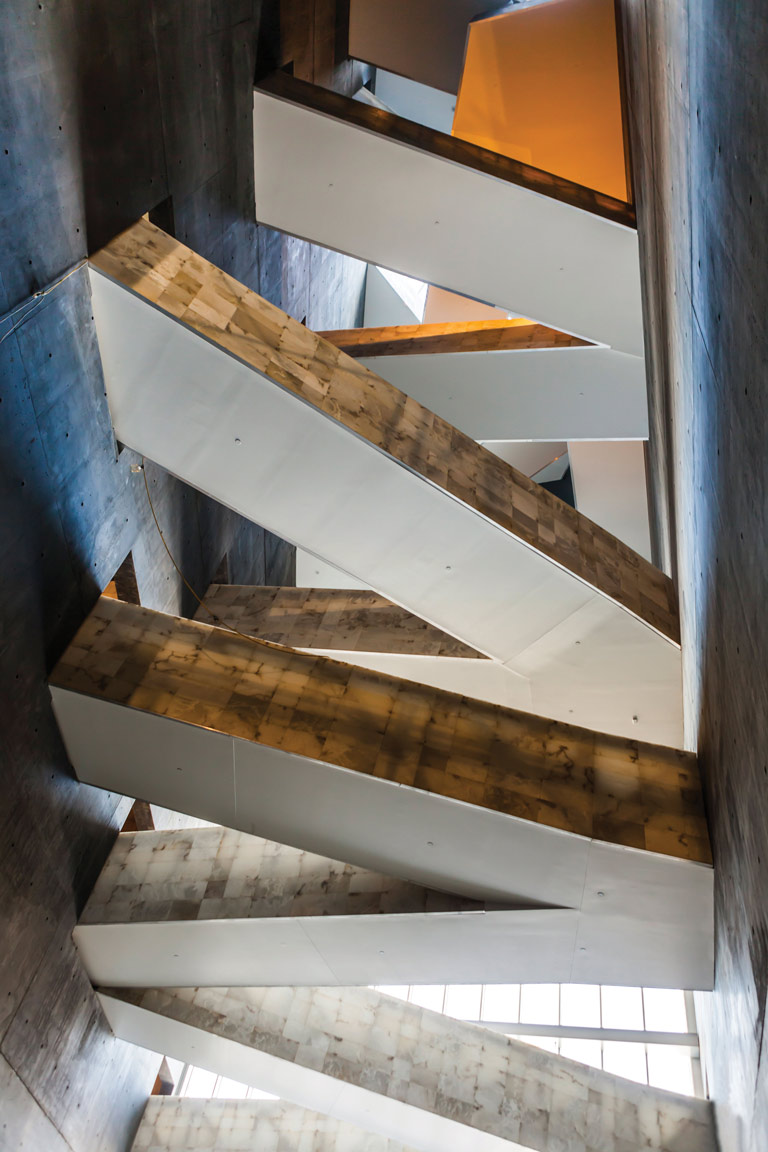
Stuart Murray became the president and CEO of the museum in 2009, the year after it was proclaimed the first national museum outside of the National Capital Region. The former business executive and politician is pleased to have a key role with an institution he sees as unique in the world. “To our knowledge there is no other museum that is open or being built in the world today that deals with the broad issue of human rights, particularly from an educational perspective,” he said.
The Canadian Museum for Human Rights is often described as an “ideas museum,” and for Murray this means that its main purpose is to look at issues from multiple perspectives while creating a conversation. The museum will attempt to walk a fine line between encouraging debate and dialogue, on one hand, and maintaining a non-partisan position in the thick of fundamental, passionately argued political issues. He admits that there will be challenges and says one of the biggest will be “trying to let people feel comfortable to look at the other side of an issue.”
Murray also emphasizes that this is intended to be neither a memorial nor a genocide museum: “It’s about an education of human rights,” he said. “We are looking at a broad spectrum of human rights … with Canadian history as a grounding for the journey as visitors go through the building.”
People who undertake that journey will gradually be enveloped by the building’s four massive “roots” as they descend towards the entrance. For architect Antoine Predock, this element — inspired by exposed riverbank tree roots — symbolizes humanity’s connection to the earth. Inside the museum, lower-level concrete walls are tinted and the floors cracked to resemble dried Red River clay. Before construction began, a massive archaeological dig, conducted in consultation with Indigenous elders, uncovered hundreds of thousands of objects indicating centuries of habitation by Indigenous peoples. Predock also consulted with First Nations elders regarding his design, which began with a series of small clay models and was developed during a number of site visits.
The building’s overarching theme is that of “a journey from darkness to light.” Visitors will ascend as they follow a circuitous path through the various galleries and ultimately towards the “Tower of Hope.” There is a “Garden of Contemplation” for quiet reflection amid greenery and pools of water, and the curving glass “Cloud” that wraps around the south and west sides of the building also resembles the wings of a dove.
Murray says the architectural committee chose Predock’s design “because this building, in its own iconic fashion, is a statement about human rights.” The committee wanted a building that would be a visible destination within the landscape.
“The whole building is more of a ziggurat, a tower, and you follow the tower as part of the tour of the installations,” said former Canadian Museum of Civilization CEO Victor Rabinovitch, who served on the committee. He said the design succeeds “both by its verticality … and by the organic inclusion of a visible notion of hope and aspiration.”
Save as much as 40% off the cover price! 4 issues per year as low as $29.95. Available in print and digital. Tariff-exempt!
The museum’s staff is anticipating both its opening and the changes that will come as it moves towards the next stages of its development. Angela Cassie, the director of communications and external relations, explains that the content and exhibit design went through a multi-stage, multi-year consultation process involving a content advisory committee; a research team; historians, lawyers, and other outside experts; a range of interested groups and communities; the federal Department of Canadian Heritage; public consultations held in every province and territory; and designer Ralph Appelbaum Associates.
Over the course of several years, research moved from broader themes to more specific stories — such as with the Ukrainian forced famine known as the Holodomor, for which a European scholar was eventually asked to help develop specific content. The Holodomor and other genocides that have been recognized by Canada are examined in the Breaking the Silence gallery. Cassie says the museum cannot be comprehensive but is designed to help people feel engaged with the content.
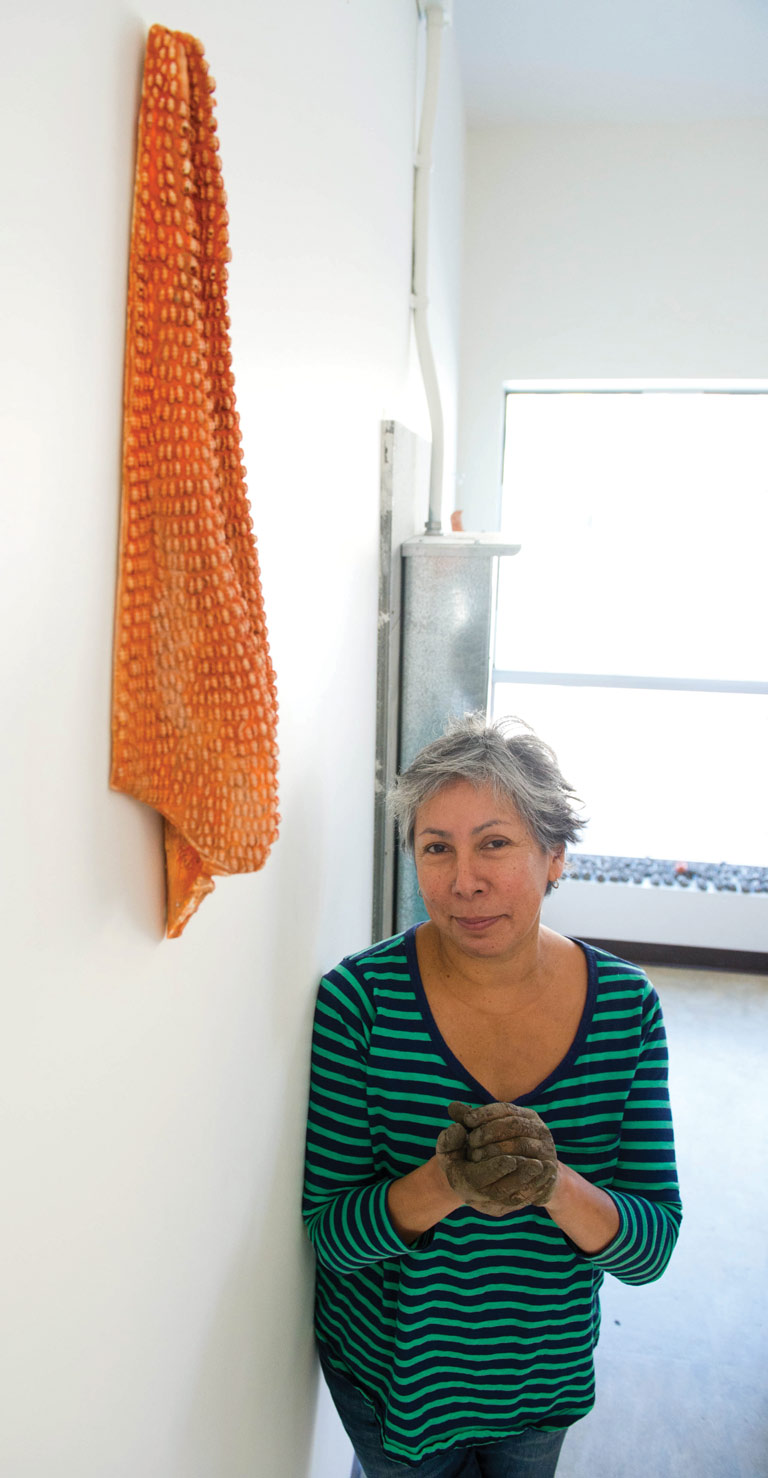
Each of the eleven galleries is developed around a specific theme, with three focusing on Canadian human rights history and issues. Following the introductory What are Human Rights? section, visitors enter the Indigenous Perspectives gallery — which explores Canadian Aboriginal traditions, including concepts of humanity and responsibility — and then the Canadian Journeys gallery, the museum’s largest and the one most shaped by public input. It examines French language rights, the Chinese head tax, and numerous other stories before the Protecting Rights in Canada section offers an interactive encounter with legal aspects of human rights.
Director of exhibitions and digital media Corey Timpson, who recommends lengthy or multiple visits, says the experience will be different for each visitor depending on their interests and the extent to which they engage with the content. He notes that the content is driven by media and digital collections, rather than a collection of objects; the modular design will allow for cost-effective responses to the changing landscape of human rights.
June Creelman, the director of learning and programming, says she has “the best job at the museum.” Along with public programs, she’s working on the school tours and national student program that will be begin in 2015. She says it’s unlike any other national museum in terms of its involvement with education departments and with teachers — who have said “loud and clear” that “concepts of human rights start when you start school … with notions of respect for each other, co-operation, and fairness.”
The museum has already had an impact on academic inquiry in Winnipeg and beyond, with a new Centre for Human Rights Research at the University of Manitoba, lectures, books, an academic journal, and many research projects. For Jodi Giesbrecht, a history Ph.D. who is originally from Manitoba and now manages research and curation at the museum, seeing everything come together is exciting. She mentions the Canadian Journeys gallery in particular, which includes some seventy stories, such as key episodes in the evolution of women’s rights. Exhibits are arranged as a “patchwork quilt,” and not chronologically, Giesbrecht explains, saying this is intended “to suggest that there is no single story of human rights in Canada — there is no one journey; there are multiple journeys.”
Advertisement
In advance of its opening, the Canadian Museum for Human Rights has faced questions about its financial model, possible government influence regarding its content, which stories it will tell, and whether the kind of neutrality expected of a national museum is compatible with its mission of supporting human rights. One could also ask where the relatively new concept of human rights is going and whether it — and the museum’s vision of a cosmopolitan culture that accepts and promotes difference — has staying power in a complex and ever-changing world. No single part of the museum will address everyone’s concerns or expectations. But perhaps as a whole it will go some ways towards its objectives of overcoming fears of “the other” and promoting acceptance of people who may be very different from ourselves.
One of the museum’s many approaches to storytelling is to display works of contemporary art, including Trace, a piece conceived by award-winning artist Rebecca Belmore for the museum’s Indigenous Perspectives gallery. Belmore, who is from Upsala, Ontario, but now resides in Winnipeg, has created performances and other powerful works that evoke both the history and the present-day challenges of First Nations people in Canadian society.
While many of her creations have examined difficult topics such as pressures on land and resources, or missing and murdered Aboriginal women, Trace involves a delicate balancing of past, present, and future that seems less “pessimistic” (a word she has used to describe herself) than some of her other projects. Belmore was moved by the number of artifacts found in the museum site’s archaeological dig and was inspired by Winnipeg’s clay gumbo soil, from which schoolchildren and other community members were invited to help fashion thousands of handmade “beads” that form a massive “blanket” hanging on a seventy-four-square-metre wall of the gallery.
“That human trace of the younger generations is really an inherent part of the artwork,” said curator Lee-Ann Martin, who has worked with Belmore on this project and many others. The blanket is a motif Belmore has used before, both because of the sense of comfort and shelter it implies and because of its troubling resonances with First Nations’ pasts and present, such as the eighteenth-century smallpox epidemic, or a homeless woman who froze to death in the 1990s.
Like the museum itself, Trace is about not looking away from what has happened. Says Martin: “It’s about looking back, but it’s also looking at now and into the future.” Both the artwork and the museum are in large measure about bonds that are also responsibilities — bonds with the earth, with the “depth of history” (to use Belmore’s words), and with our communities and fellow residents of this shared world.
* * *
For an overview of the museum’s main galleries, visit CanadasHistory.ca/CMHRgalleries.
To see more images of the construction of the Canadian Museum for Human Rights, click here.
At Canada’s History, we highlight our nation’s past by telling stories that illuminate the people, places, and events that unite us as Canadians, while understanding that diverse past experiences can shape multiple perceptions of our history.
Canada’s History is a registered charity. Generous contributions from readers like you help us explore and celebrate Canada’s diverse stories and make them accessible to all through our free online content.
Please donate to Canada’s History today. Thank you!

